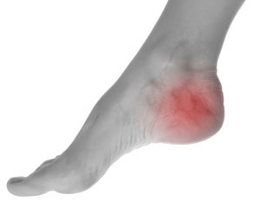Experiencing inner ankle pain after running could be indicative of possible injuries or more serious ailments. In this article, we'll try to get to the bottom of the reasons why this pain may occur and also offer some effective treatments for it.

Regular physical exercise can lead to a lot of stress and strain to the body. Running, as a form of exercise, is very effective and probably the most popular one. However, there may sometimes occur some instances when you may experience a shooting or stinging pain in your inner ankle after running for some time. What causes this pain? How does one go about finding suitable remedies for such a pain? Let's find out in this Buzzle article.
Causes
A pain in the inner ankle while or after running may not seem a matter of concern to many, while it may be so in a majority of cases. But that does not mean that the condition can be taken extremely lightly. The first step towards treating any kind of ailment is being able to identify the cause of the ailment. Given below are some of the most probable causes why you may experience pain in your ankle after running.
Ankle Twist
Slight or strong trauma in the ankle region is the most common cause why you may experience a shooting pain in your inner ankle. It is possible that during your run, you may have placed your foot in a manner that may have led to the twisting of the ankle. It affects the ligaments of the area and causes them damage. It may or may not lead to a sprain, but definitely causes pain in the ankle.
Wrong Shoes
More often than not, people do not realize the importance of wearing the appropriate shoes when they go running. So, if you're experiencing pain in your inner ankle, especially after running, and you're sure you haven't twisted your ankle, then try a change of shoes. Make sure that you get shoes that are meant solely for running. Also, make sure that they fit you perfectly. It may be possible that you're wearing the right shoes, but they're either too big or too small. Both conditions will make you uncomfortable and unable to run without straining yourself.
Tendinitis
Tendinitis is a condition in which the tendons (the fibrous tissues that connect the bones and the muscles) suffer from inflammation. The pain may also be accompanied by swelling and tenderness in the area around the ankle. Tendinitis can be caused if there is excess stress applied to the ankle or even if there is repetitive strain on an injured ankle, like in a sport.
Treatments
Now that we know the possible causes for the pain, let's move on to the next step of finding out the best remedies to get some relief for it.
Rest
The most fundamental and the most underrated advice given is to simply rest the injured foot. The pain is a message sent by your body telling you to take it easy and not stress your injured ankle. So, give your ankle some rest. Don't push yourself by exerting the ankle. It's not brave, it's the proverbial blissful ignorance, and it will lead you to a more severe condition.
Icing
Giving a cold treatment to the injured ankle is another effective way to deal with the injury. Use a cold compressor or get an ice pack and gently dab it on the injured ankle. If you don't have either, you can make one for yourself by wrapping ice cubes in a piece of cloth and gently pressing it on your ankle. After you do this, place your foot in an elevated position and let it rest for a while till you feel better. Then, you can indulge in some simple exercises to regulate the blood flow in the foot.
Anti-Inflammatory Medication
If you don't experience any relief even after using any of the treatments given above, then you must consult a physician for medical advice. He will most probably advice you to take some anti-Inflammatory medication, most likely Ibuprofen, to ease the inflammation and reduce the pain.
The pain may not seem very serious at first and may fade away soon in some cases. However, you must still be cautious about how much pressure you exert on the injured ankle. Keep it to a minimum until you're sure that it is perfectly healed. Only then should you indulge in strenuous running or physical exercises.


 Regular physical exercise can lead to a lot of stress and strain to the body. Running, as a form of exercise, is very effective and probably the most popular one. However, there may sometimes occur some instances when you may experience a shooting or stinging pain in your inner ankle after running for some time. What causes this pain? How does one go about finding suitable remedies for such a pain? Let's find out in this Buzzle article.
Regular physical exercise can lead to a lot of stress and strain to the body. Running, as a form of exercise, is very effective and probably the most popular one. However, there may sometimes occur some instances when you may experience a shooting or stinging pain in your inner ankle after running for some time. What causes this pain? How does one go about finding suitable remedies for such a pain? Let's find out in this Buzzle article.